| Pentax/Camera Marketplace |
| Pentax Items for Sale |
| Wanted Pentax Items |
| Pentax Deals |
| Deal Finder & Price Alerts |
| Price Watch Forum |
| My Marketplace Activity |
| List a New Item |
| Get seller access! |
| Pentax Stores |
| Pentax Retailer Map |
| Pentax Photos |
| Sample Photo Search |
| Recent Photo Mosaic |
| Today's Photos |
| Free Photo Storage |
| Member Photo Albums |
| User Photo Gallery |
| Exclusive Gallery |
| Photo Community |
| Photo Sharing Forum |
| Critique Forum |
| Official Photo Contests |
| World Pentax Day Gallery |
| World Pentax Day Photo Map |
| Pentax Resources |
| Articles and Tutorials |
| Member-Submitted Articles |
| Recommended Gear |
| Firmware Update Guide |
| Firmware Updates |
| Pentax News |
| Pentax Lens Databases |
| Pentax Lens Reviews |
| Pentax Lens Search |
| Third-Party Lens Reviews |
| Lens Compatibility |
| Pentax Serial Number Database |
| In-Depth Reviews |
| SLR Lens Forum |
| Sample Photo Archive |
| Forum Discussions |
| New Posts |
| Today's Threads |
| Photo Threads |
| Recent Photo Mosaic |
| Recent Updates |
| Today's Photos |
| Quick Searches |
| Unanswered Threads |
| Recently Liked Posts |
| Forum RSS Feed |
| Go to Page... |
PentaxForums.com → Film Cameras and Workflow → Vintage Cameras and Equipment
→
1955 Kiev IIa: Soviet or German rangefinder?
 |
| 27 Likes | Search this Thread |
| 10-10-2022, 09:05 PM - 14 Likes | #1 |
| 1955 Kiev IIa: Soviet or German rangefinder?
Hello, Bear with me as I can't make this one short. It is impossible to discuss this without getting into its history. This story includes politics, war, multiple centuries, multiple continents, multiple decades and multiple historic heavy hitters in the photo industry. I'm still researching this but I think it is time to publish. Text by me from my own never ending research. In the late 19th century, Thomas Edison and colleagues developed what was to become the motion picture. Early in that process, they used Eastman's (eventually Kodak) 70mm film stock and cut it in half lengthwise for a more manageable size and to avoid waste. This 35mm film stock quickly became the most common motion picture gauge, eventually becoming a standard. In the very early 20th century, there were already attempts to use this cinema film for still photography. As early as 1913 there were already available photographic cameras like the Tourist Multiple using this film size, but they never took off and the 35mm continued to be mostly a motion picture standard. By this time contact printing was the norm and enlarging was not very common, making this miniature format less attractive for regular photography. Around that time, a German engineer named Oskar Barnack was working for the Ernst Leitz optical company which manufactured optical devices like microscopes. He got involved with motion picture cameras and invented a device, essentially a camera, to test samples of motion film stock. Motivated by the success of this and the prospect of an easily portable camera, Barnack continued to develop the idea into what was to become a stills photography camera using 35mm film. He decided to run the film horizontally instead of vertically like motion picture cameras, giving the opportunity to double the size of the resulting image to 36mm x 24mm. After years of work, including an inconvenience called World War I, the camera was finally launched commercially in 1925 and was named Leica for LEItz CAmera. The Leica is credited to be the first successful 35mm compact camera and it also credited to establish the 36mm x 24mm frame size as a standard. The Zeiss Ikon company, another German optical company that can trace its origins back to the mid 19th century, got interested in this new market. They were already a camera manufacturer. Barnack had worked for them prior to going to Leitz. Zeiss Ikon developed a camera to compete with the Leica. It was named CONTAX and was launched in 1932. This camera was technically superior to the Leica with advanced features like easier loading/unloading, a quick bayonet mount instead of a screw mount, a metal shutter instead of cloth which was a weak point on the Leica, higher shutter speeds, integrated rangefinder/viewfinder and a more accurate and precise rangefinder thanks to a wider base. The CONTAX was extremely complex and was rushed to the market, resulting in many issues. However, Zeiss Ikon had superior lenses like the Sonnar f2 and f1.5. Zeiss Ikon worked very hard to solve the issues and in 1936 launched the CONTAX II, a revised and updated version of the original, and the CONTAX III, the same camera with an added built in uncoupled light meter, considered by many the first successful modern camera with a meter. This time, the cameras were ready. They quickly became a big success and the preferred choice of journalists. Now Contax was competing head-to-head with (and beating) Leica. They both helped the 35mm format to gain popularity. But they were not the only players. Kodak launched the Retina series of cameras in 1934 alongside a new film standard called 135: 35mm film cassettes of standard dimensions and perforations. That's the 35mm film we know today. Before that, both Leica and Contax relied on loading film into proprietary canisters in a darkroom. The 135 format made it easier and widely available. It was marketed as also compatible with Leica and Contax cameras. Also in 1936, American company Argus launched their Model A 35mm camera to use this new format. So now we have an explosion of the format with Argus covering the lower cost segment, Kodak the mid segment, Leica and Contax the upper and pro segments, while Kodak sold film like never before. So far so good and everybody is happy! Germany was at the forefront of optical technology. But then, World War II happened. The Contax II was very popular with journalists during the war. Some of the most iconic pictures of WWII were taken by Robert Capa on June 6, 1944, during the invasion of Normandy. He used two CONTAX cameras. Capa is credited to be one of the first and greatest civilian photographers (crazy enough) to go to battle with soldiers. In fact, he was killed years later by a mine in Vietnam. That's a whole other topic for another disucssion. When Germany realized they were loosing the war, they tried among other things to protect intellectual property. Italy had already fallen so their only important allied left was Japan. Part of the intellectual property sent to Japan included samples and diagrams of cameras and other optical devices. More on that later. When the allies invaded Europe in 1944, the race was on between the US led forces from the west and the Soviet forces from the east to capture Berlin. Long story short (and this is a topic I can discuss for hours) by 1945 the war was over in Europe and Germany was eventually divided in two: West Germany controlled by the US led coalition and East Germany controlled by the Soviets. Zeiss Ikon was based in Dresden with other sites in Jena and Stuttgart. Dresden and Jena fell under East Germany while Stuttgart was in West Germany. Zeiss Ikon was split in 2 companies: Zeiss Ikon AG Stuttgart in West Germany and VEB Zeiss Ikon Dresden. Intellectual properties and trademarks were hot topics of legal battles between the two for years. Eventually the West Germany company retained the Zeiss Ikon name and the East Germany company became Pentacon. This split in itself is yet another topic for a whole other discussion. But let's go back to the end of the war. The Soviets controlled Dresden, where the main Contax factory was located. Long story short, the Soviets took the factory: tools, machinery, parts inventory and most importantly personnel, and relocated it to the Arsenal factory in Kiev, Ukraine in the then Soviet Union. By 1947 they were already building CONTAX II cameras. The only change was that it was renamed KIEV in the front plate. These were not CONTAX copies. These were actually genuine CONTAX cameras made by Zeiss Ikon machinery, using original parts, personnel and processes. Only that the factory was now located in the Soviet Union. So the Kiev II was a Contax II and the Kiev III was a Contax III. By 1955, the Kiev II was upgraded to include a flash sync port and renamed Kiev IIa. The Kiev III also received the same upgrade becoming the Kiev IIIa. These are not to be confused with the CONTAX IIa and CONTAX IIIa that were launched in 1950 and 1951 respectively by Zeiss Ikon Stuttgart, a totally different company by then. Eventually, these Kiev cameras evolved into Kiev 4, 4a, 4M and 4AM produced until the late 1980s. as the years passed, the quality started to degrade. It is said that up to the late 60's and early 70's the quality was very good but went down from there. Very old machinery, original experts passed away or no longer there, costs, raw materials, etc. What about the lenses? The Soviets did copy the Zeiss Ikon Sonnar f2 as the Jupiter-8. However, they used lighter aluminum for the construction. This lens has great reviews and performs very good. Some experts agree that it is very close to the original Sonnar. The Jupiter-8 was built until the 1970's and was used in Kiev and Zorki Soviet cameras, in Contax mount and M39 screwmount respectively. Another Zeiss lens made by the Soviets was the Jupiter-3, the Soviet version of the Sonnar 50mm f1.5. But wait, there's more! Remember that some intellectual properties were sent to Japan? Nikon's first rangefinder camera, the Nikon One was based on the Contax II with some features from Leica. It was also the base for the Nikon F, Nikon's first SLR in 1959. Combined with the fact that the Kiev was made until the late 1980's the CONTAX II is quite an important and influential part of the history of photography! My Specimen: One of my favorite film photographers from the Pentax Forum is Colton Allen (swift1). I love his images. When I saw he was selling his Kiev IIa I broke my self imposed rule of no camera purchases for 2022. I thought that by getting a camera from him I may also get some of his photographic coolness 🙂 Shoutout to Colton. We love you buddy! This particular unit is a very early Kiev IIa from the first year of this model, 1955. Most likely this is its original lens as both serial numbers match the year 1955. The first two digits of the serial number indicate the year of production. From my research, it is the lowest serial number of about half a dozen I've found and confirmed myself online. It is working properly so I will not fool around with it. I'll just do a typical cleanup job and take it out for a spin. Can't wait to use it! It is in great shape, clean and working properly. 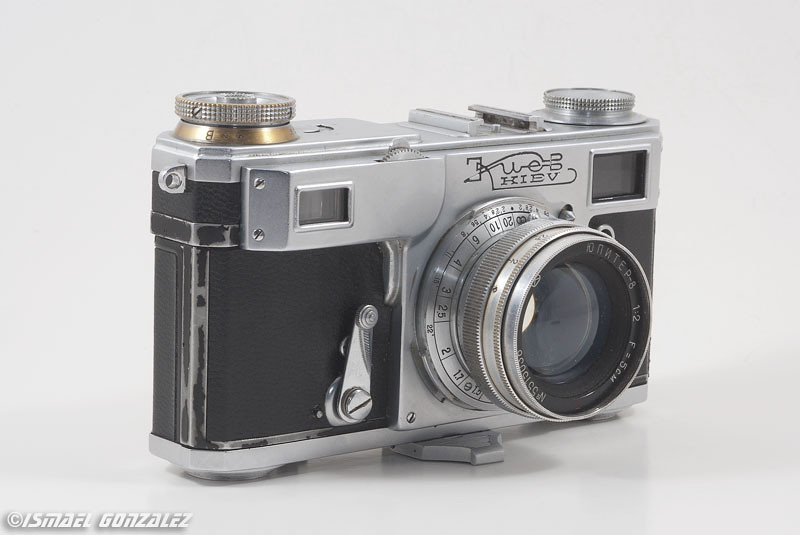 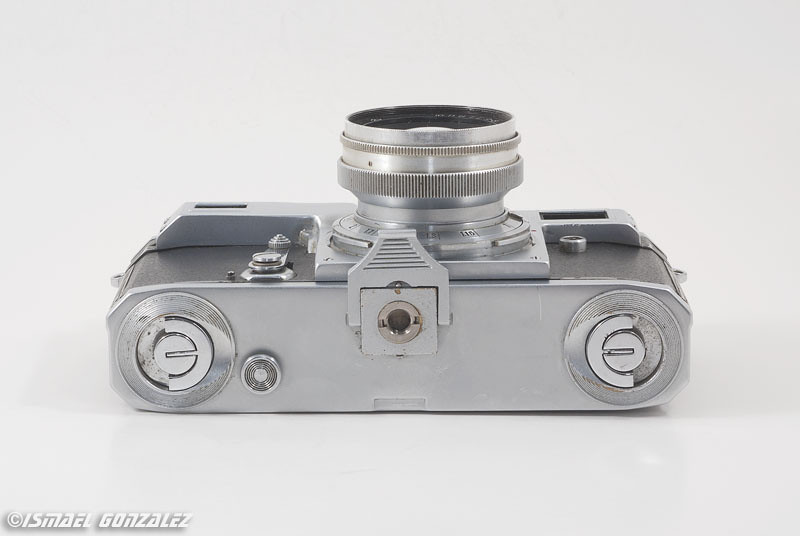 The lens could use some cleaning inside and out. I debated whether or not to tinker with it. 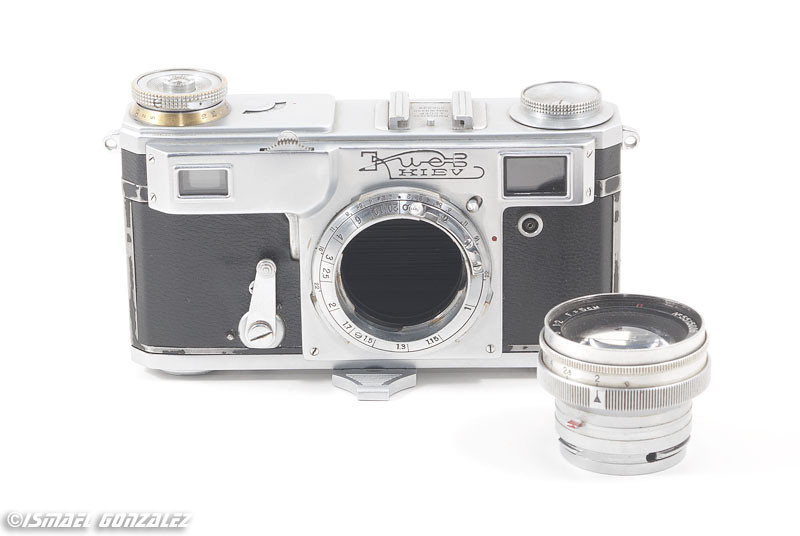 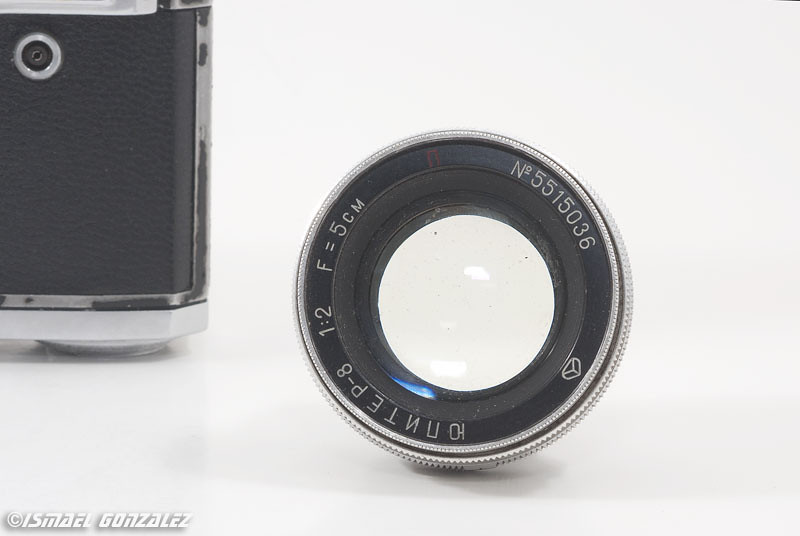 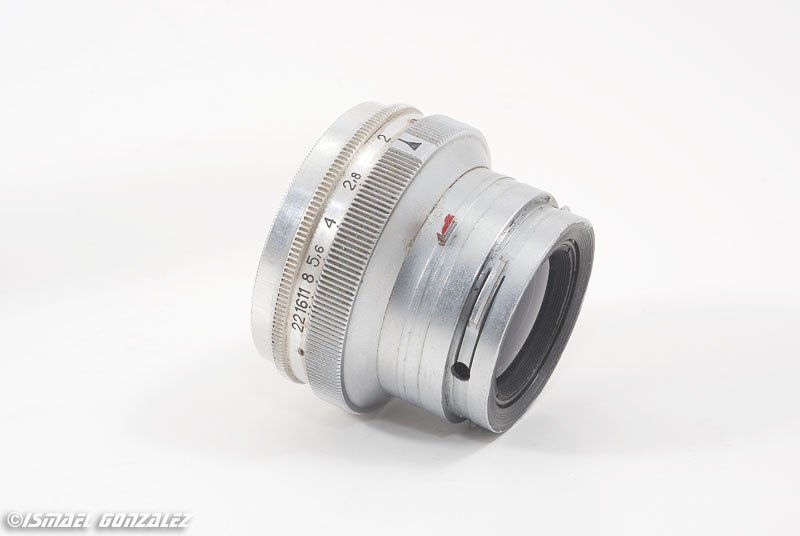 I found in my research that there are a gazillion different variations of these lenses. I could not find disassembly instructions for this particular type. This was nerve-racking! It's been a long time since I was this scared working on something. I first worked the rear elements and reassembled before proceeding to the next step. 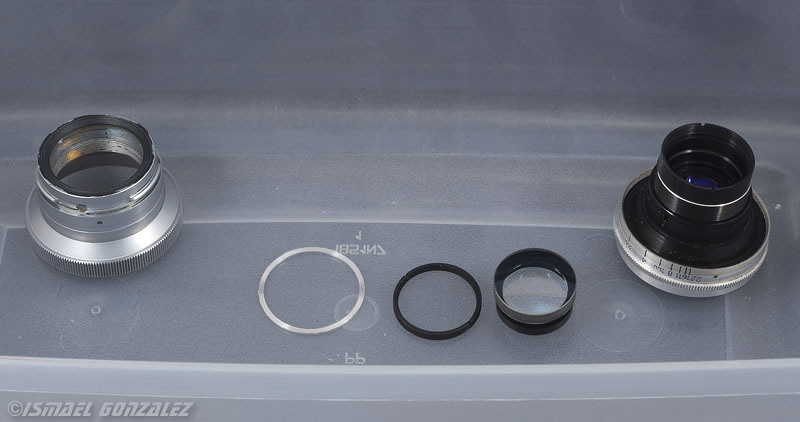 This was NERVE RACKING! Those tiny little grub screws are a royal pain. I was constantly thinking "I'll never forgive myself if I screw up and destroy this one..." 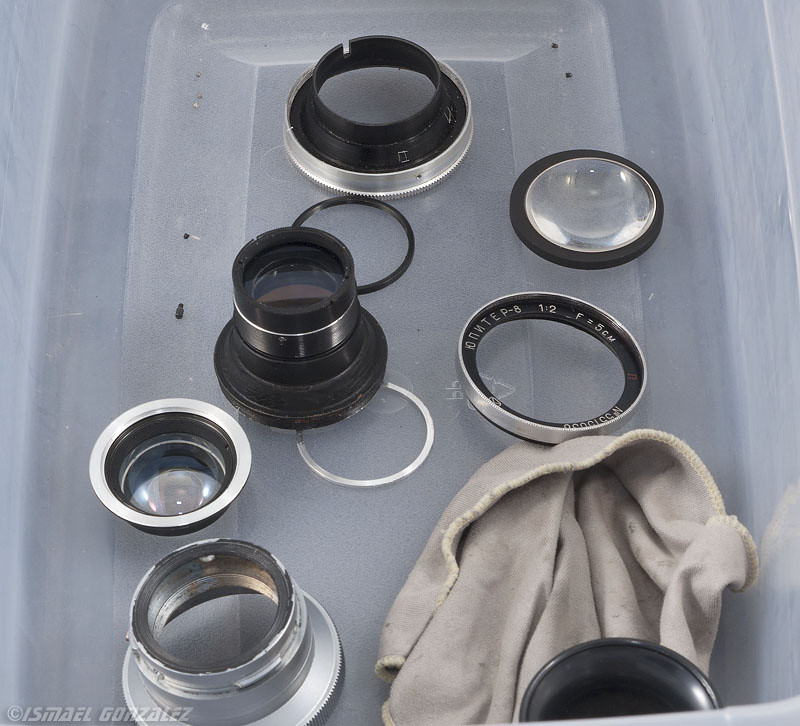 Cleaned the old gummed up grease. Then replaced with a little lithium grease. 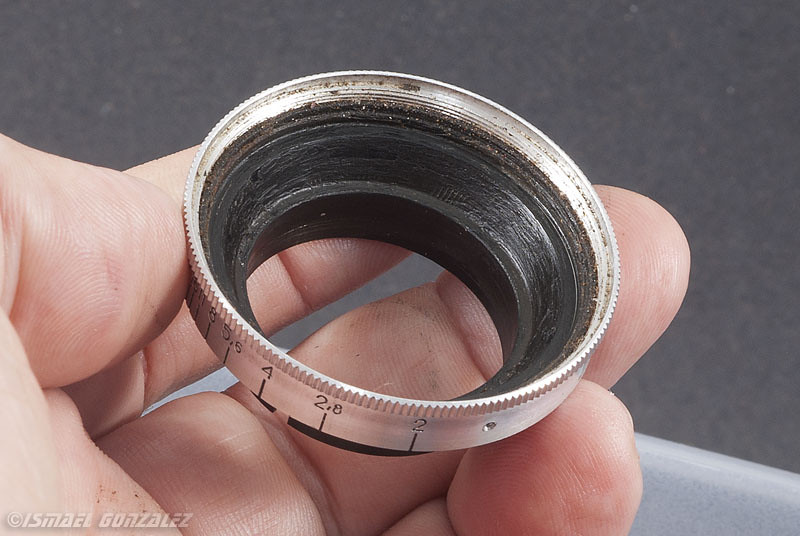 Cleaned and polished, everything went back together and I could breathe again! 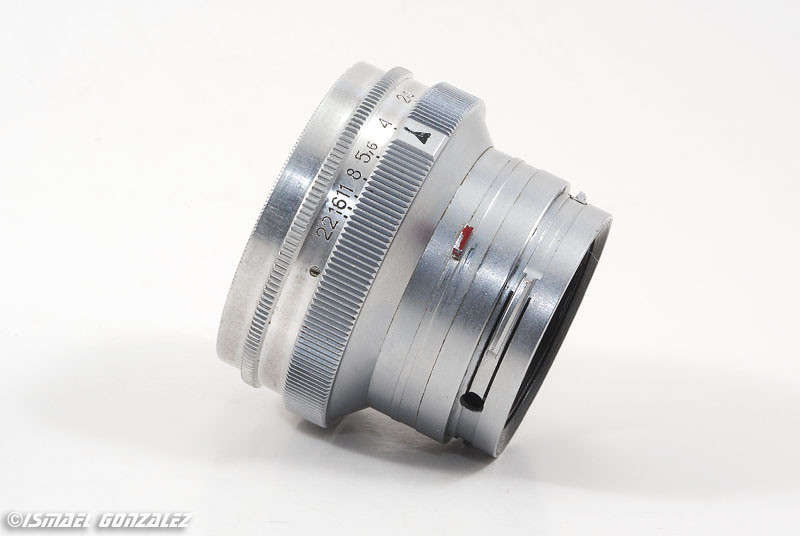 This lens is a copy of the Zeiss Sonnar 50 f2. So it is only fitting to use Zeiss lens cleaner   Don't quote me on this. But I think that red character is a Cyrillic "P" and it means the lens is coated. 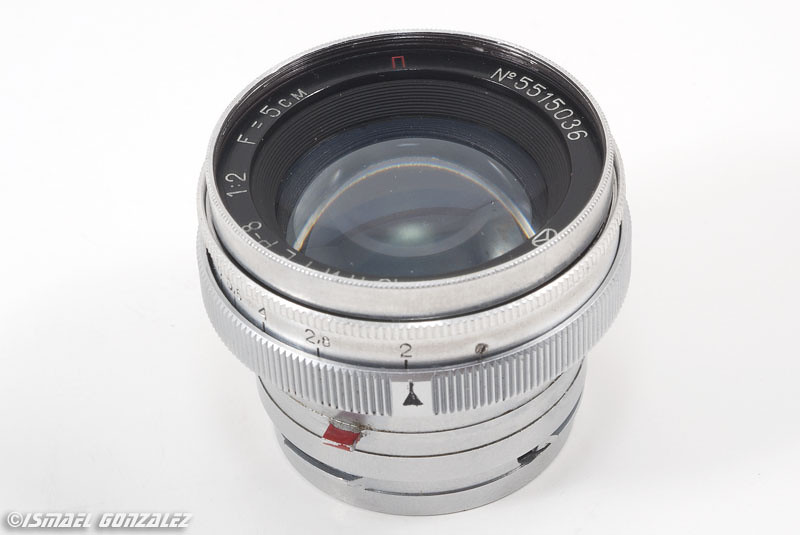 So, LADIES AND GENTLEMEN! May I present my new 1955 Kiev IIa with the soul of a CONTAX! A Soviet with a German soul. Other than the lens, nothing was disassembled. I decided against repainting the black metal parts to keep the nice patina. 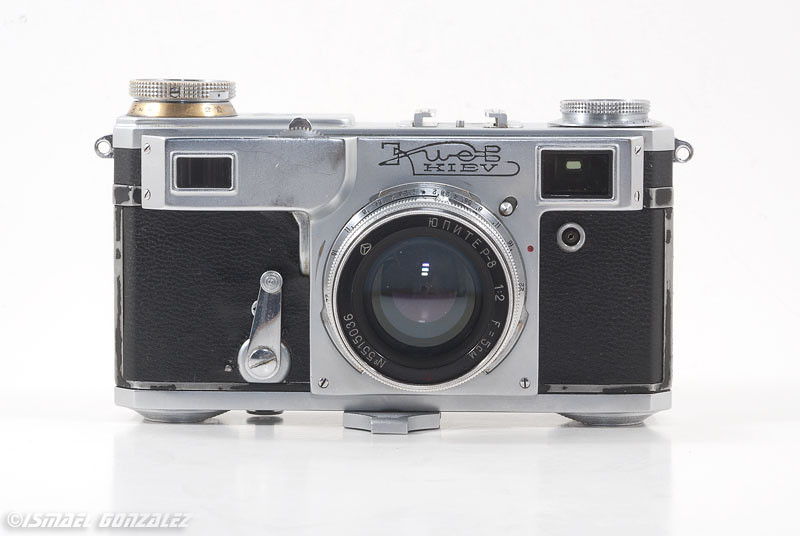 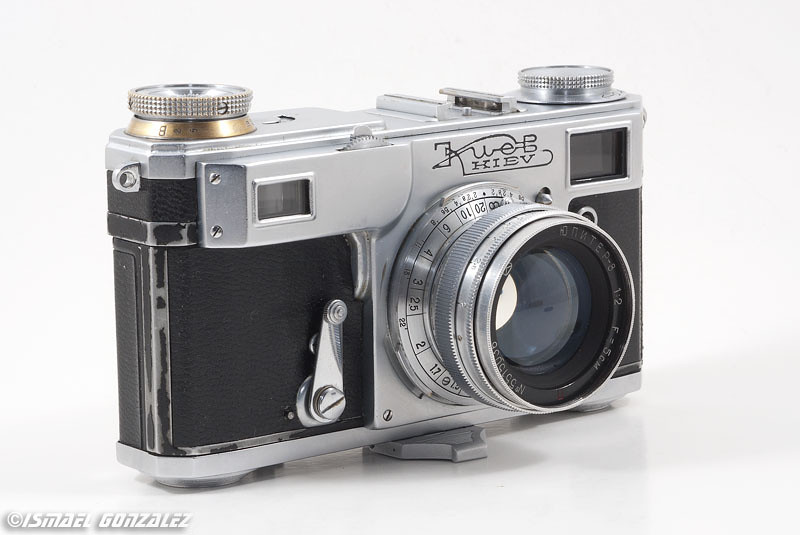 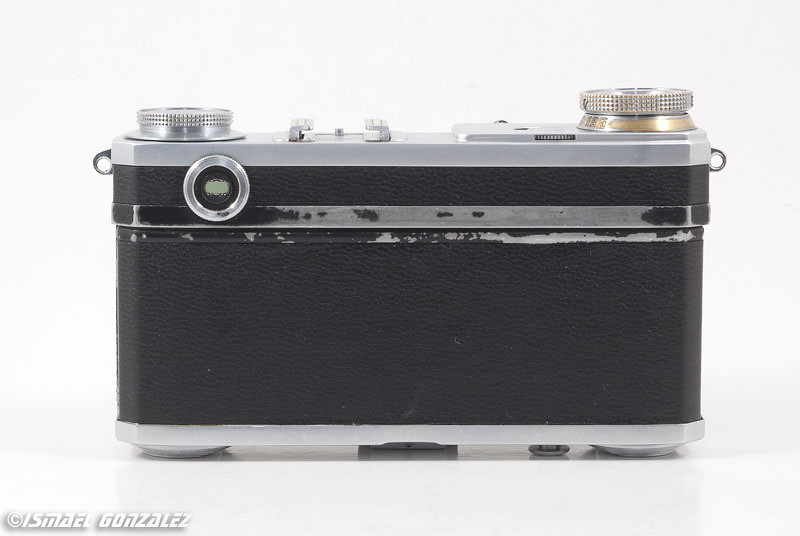 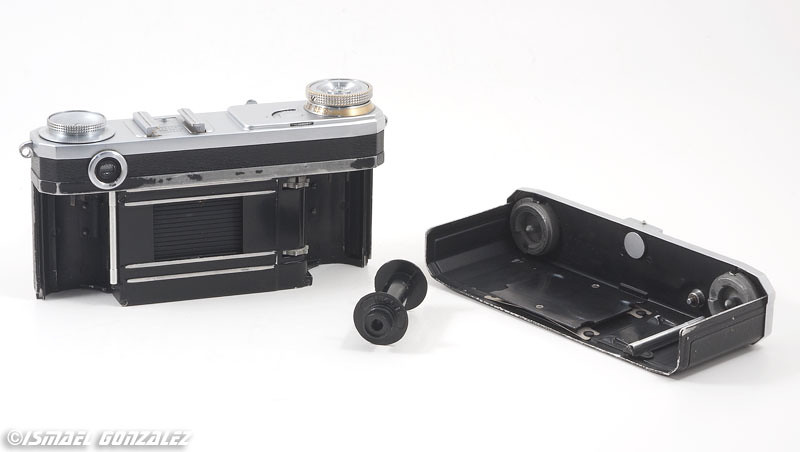 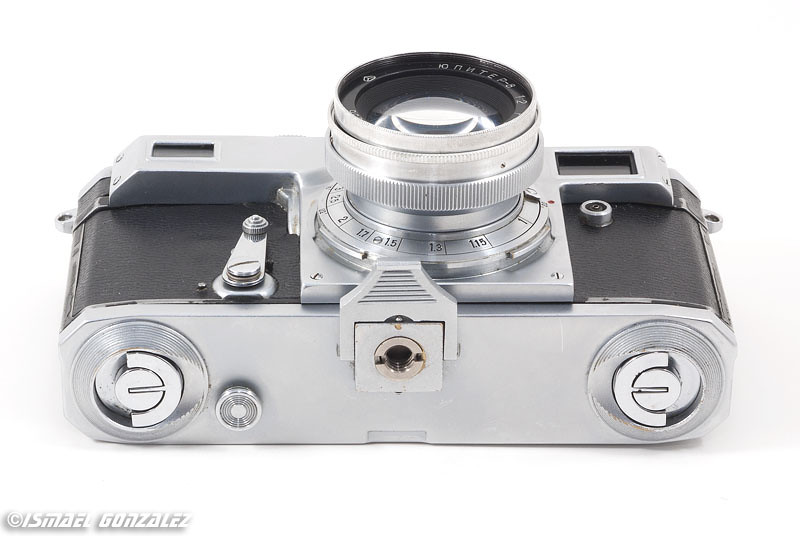 My favorite part is the brassing on the advance /speed dial knob. This screams high mileage! Not a shelf queen. 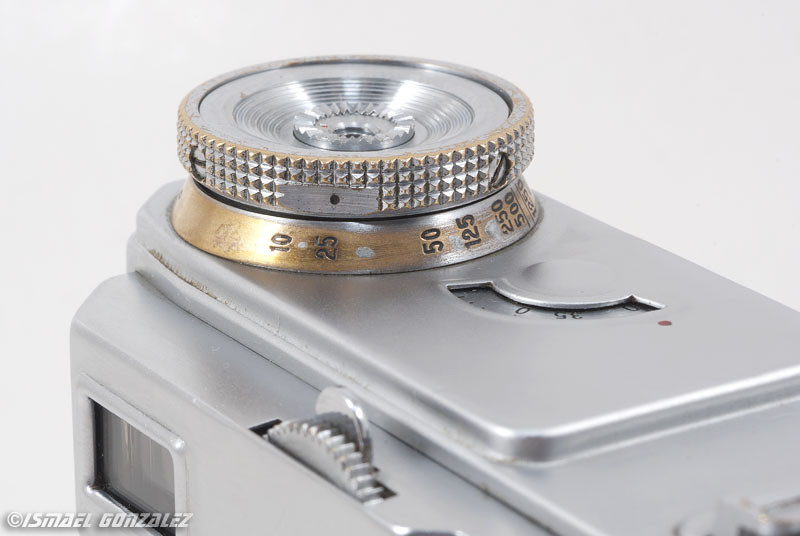 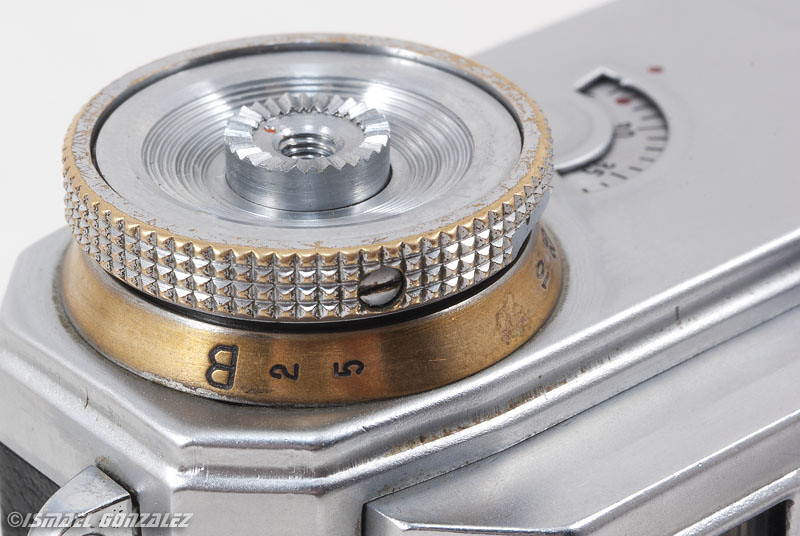 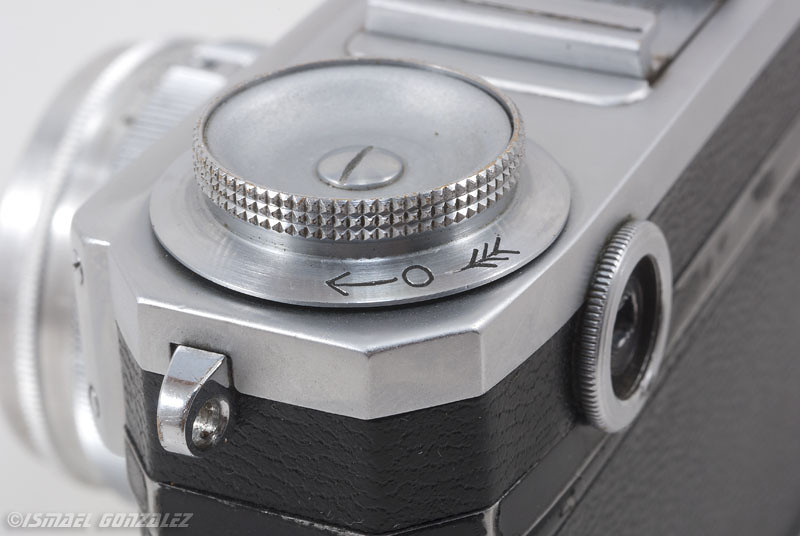 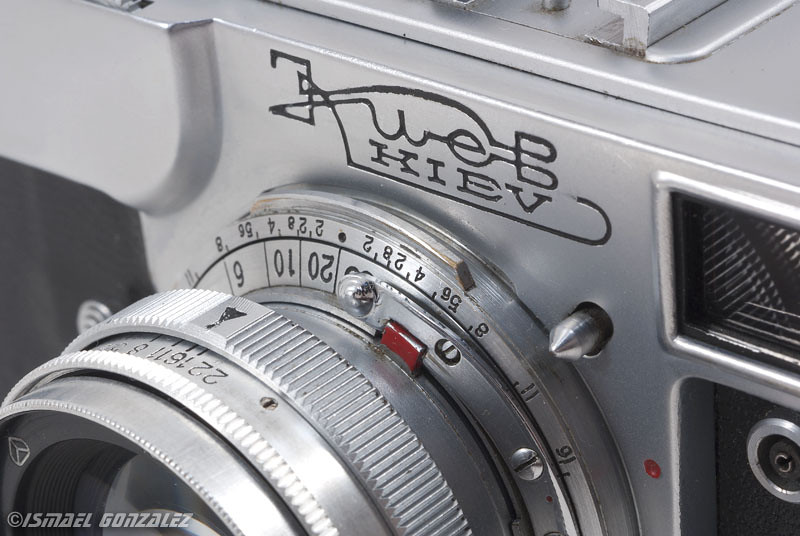 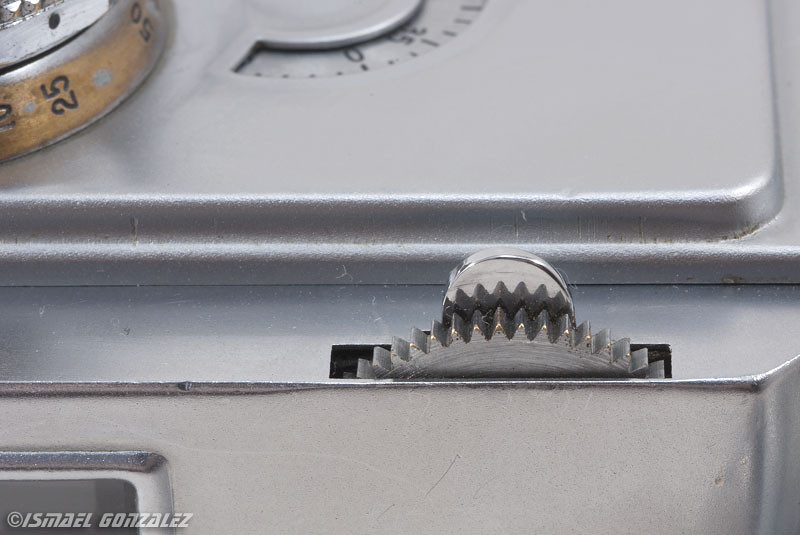 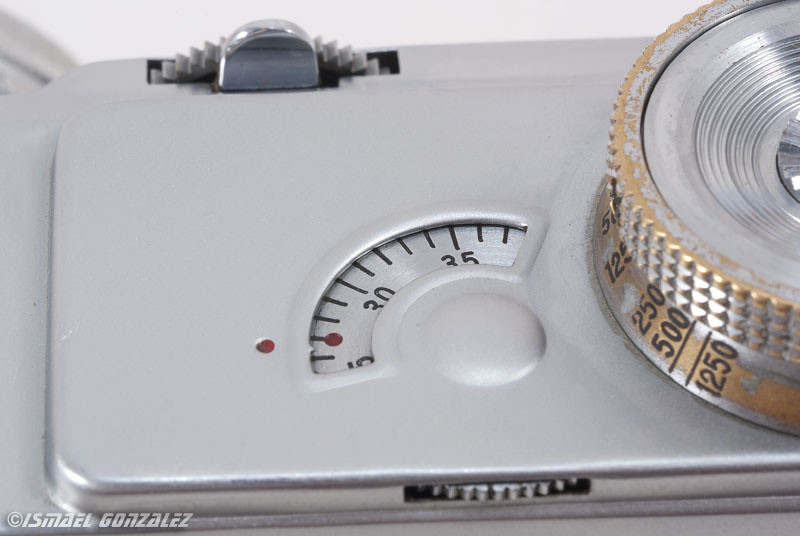 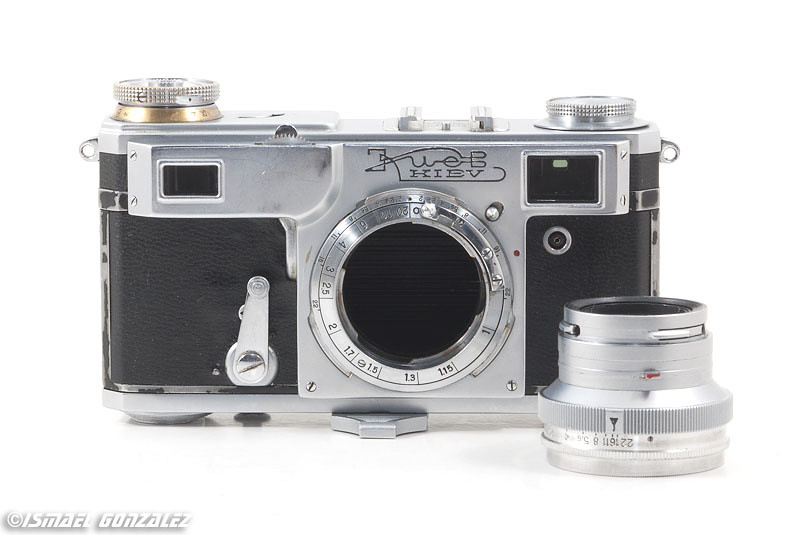  And the traditional comparison. This was a surprise. It feels smaller than an SLR, but is is the same size as a K1000 both side by side and back to back. 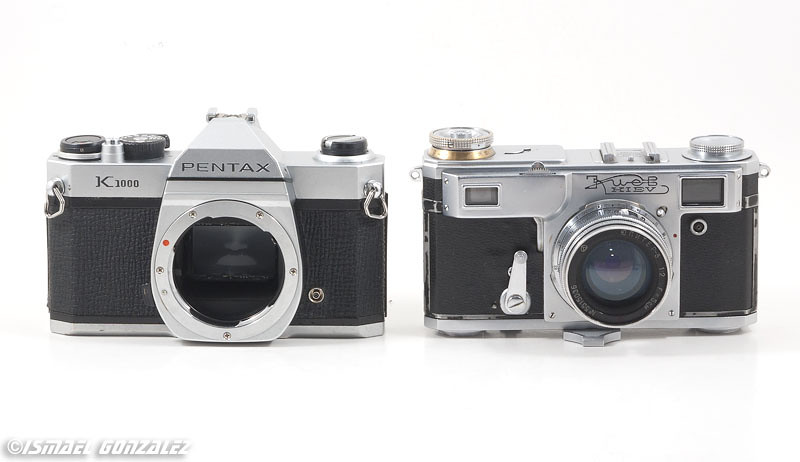 Sorry for quite a long post! I hope you approve. Stay tuned as it will be tested soon and I'll eventually share the results here. Thanks, | |
| These users Like ismaelg's post: |

| 10-11-2022, 05:48 AM - 1 Like | #2 |
|
Excellent summary  I've never owned or used a Kiev or a Contax, so can't comment on the cameras, but the Jupiter-8 (and it's stable-mate, the Jupiter-9 85mm f/2) are a couple of the reasons I maintain a basic mirrorless system, so I can still use my old Russian L39 r/f lenses  Enjoy! | |
| These users Like kypfer's post: |

| 10-12-2022, 09:58 AM - 1 Like | #3 |
|
Beautiful Camera, and stellar (as usual), C.L.A.b.I (Clean, Lube, Adjust, by, Ismael) 😉 | |
| These users Like Sam_I_am's post: |

| 10-12-2022, 08:04 PM - 1 Like | #4 |
| Moderator Site Supporter |
Beautiful work Ismael! |
| These users Like MarkJerling's post: |

| 10-12-2022, 09:04 PM - 1 Like | #5 |
|
Your camera is beautiful. Nothing like the tactile feel of a mechanical machine. (even my watches are pure mechanical). I read the whole thing. It is so interesting and I am pleased to see how well you sorted out the confusing history even giving credit to the Kodak Retina being the first camera to use 135 35mm film. The (German) Retinas from C1950 to c1960 were of a very high quality. I have at least 20 Retina / Retinettes; they are like jewels. Most use Schneider lenses. Here is an example: [IMG]  [/IMG] [/IMG]Quote Chris Sherlock: The Retina IIIS was manufactured from 1958 to 1961 and it was the first, and arguably the best, rigid-front Retina model Kodak ever produced. The IIIS is built on the same basic body casting as the Reflex S, and so it is slightly longer than the folding Retina IIIC cameras providing more area for the fingers of your right hand to grip the body. The IIIS used the same 'S' series interchangeable lenses as the Retina Reflex S, III, or IV. It has multiple frames visible in the viewfinder, which are automatically selected by inserting the lens, and the camera has a coupled single range meter. | |
| These users Like arnold's post: |

| 10-13-2022, 03:18 AM - 1 Like | #6 |
| The (German) Retinas from C1950 to c1960 were of a very high quality. I have at least 20 Retina / Retinettes; they are like jewels. Most use Schneider lenses. Here is an example: Quote Chris Sherlock: The Retina IIIS was manufactured from 1958 to 1961 and it was the first, and arguably the best, rigid-front Retina model Kodak ever produced. The IIIS is built on the same basic body casting as the Reflex S, and so it is slightly longer than the folding Retina IIIC cameras providing more area for the fingers of your right hand to grip the body. The IIIS used the same 'S' series interchangeable lenses as the Retina Reflex S, III, or IV. It has multiple frames visible in the viewfinder, which are automatically selected by inserting the lens, and the camera has a coupled single range meter. Nevertheless, I've still got the Schneider lenses and give them an outing occasionally on one of my Pentax's, with an appropriate DKL-PK adaptor  My favourite Retinette was the folding 012 with an Ennatar lens fitted … a bit "different" and worked beautifully with infra-red film loaded  | |
| These users Like kypfer's post: |

| 10-13-2022, 11:30 AM - 1 Like | #7 |
|
Well restored! Contax/Kievs are interesting cameras, optics from that time are mostly German, and cameras were made with German supervisors. The Jupiter 8 is a good Sonnar, yours has a 1955 serial number and the ARSENAL factory logo, so it should be a good one. Great job in cleaning it. Does it have the Zeiss bubbles in the glass ??? I had a 1952 Jup3 (50/1.5) lens and it still did I think Brian Sweeney (sonnarbrian @ RFF) has posted cleaning instructions for the Jup8/Sonnar 50/2 as there are a few things to look for, but if yours is well collimated at infinity, you shouldn't have any problems My Jupiter 3  Jupiter-3-1952 | |
| These users Like titrisol's post: |

| 10-13-2022, 02:34 PM - 1 Like | #8 |
|
Ismael, Wow, excellent write-up with all the history of the Contax/Kiev story. I love all the great photos you posted of the camera and I love the work you did to clean everything up but you kept the patina that shows the camera's history. I am happy that a camera that I cherished ended up with someone that will also cherish it. Also, thanks so much for the shout out and the love <3  I think one thing that is maybe just a technicality is that the USSR didn't just take the Contax factories, but rather they were awarded them as part of the war reparations that the Allied countries decided upon after Germany surrendered. The story of these cameras is really interesting and is what initially drew me to them. And yes the red symbol on the lens is the Cyrillic letter P meaning that it is coated. | |
| These users Like Swift1's post: |

| 10-13-2022, 03:00 PM - 2 Likes | #9 |
| Your camera is beautiful. Nothing like the tactile feel of a mechanical machine. (even my watches are pure mechanical). I read the whole thing. It is so interesting and I am pleased to see how well you sorted out the confusing history even giving credit to the Kodak Retina being the first camera to use 135 35mm film. The (German) Retinas from C1950 to c1960 were of a very high quality. I have at least 20 Retina / Retinettes; they are like jewels. Most use Schneider lenses. Quote Chris Sherlock: The Retina IIIS was manufactured from 1958 to 1961 and it was the first, and arguably the best, rigid-front Retina model Kodak ever produced. The IIIS is built on the same basic body casting as the Reflex S, and so it is slightly longer than the folding Retina IIIC cameras providing more area for the fingers of your right hand to grip the body. The IIIS used the same 'S' series interchangeable lenses as the Retina Reflex S, III, or IV. It has multiple frames visible in the viewfinder, which are automatically selected by inserting the lens, and the camera has a coupled single range meter.  At least they didn't totally ruin it by putting the winder on top   -Eric | |
| These users Like TwoUptons's post: |

| 10-13-2022, 08:24 PM - 1 Like | #10 |
| Nice, that looks like a 2c model. I sold my 2c and 3c models, but still have the 3C (Bic C) with the interchangeable lenses, like the 111S above.
| |
| These users Like arnold's post: |

| 11-04-2022, 10:00 AM - 3 Likes | #11 |
|
Hello, And we have pictures! Loaded a roll of Kodak BW400CN (expired for years but always kept in the fridge in black bag). Using mostly Sunny 16 and occasionally a light meter app on the phone to validate my estimates. Intentionally over exposed slightly from 1/2 to 1 stop. When I got the camera from Colton, he mentioned that in rare cases a small light leak had appeared. Happy to report I did not see it even with 400 speed film in bright harsh sunlight. Just downloaded the online scans. Negatives are in transit. Untouched straight out of the download except for resize and signature. Keeping the horizon level is a challenge. Here are some samples: Not the most exciting picture to show but you can see its unique wide open rendering of center sharpness and slight softness towards the corners. This rendering is what makes these lenses so unique and sought after, especially for portraits.  Some serious sharpness stopped down! This photo store closed decades ago, yet the sign still survives. Translation "The Photograph / 1 hour development" 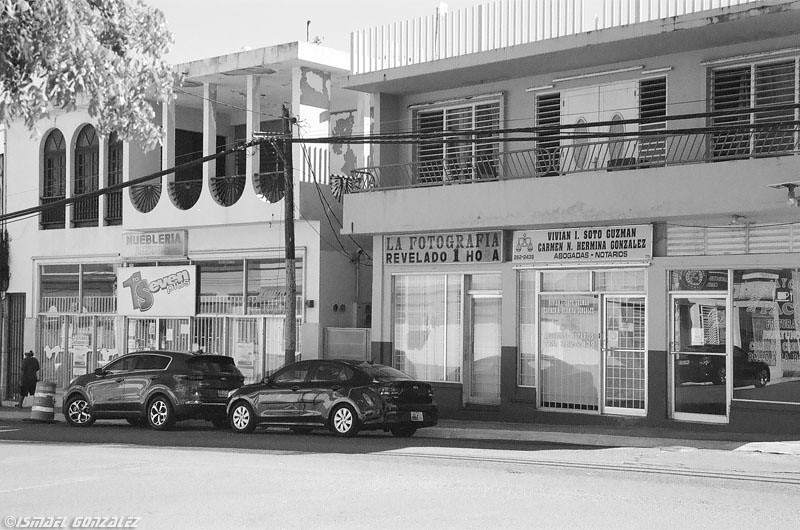 I'm an electrical engineer by trade. Yet I hate electrical wires in my pictures!  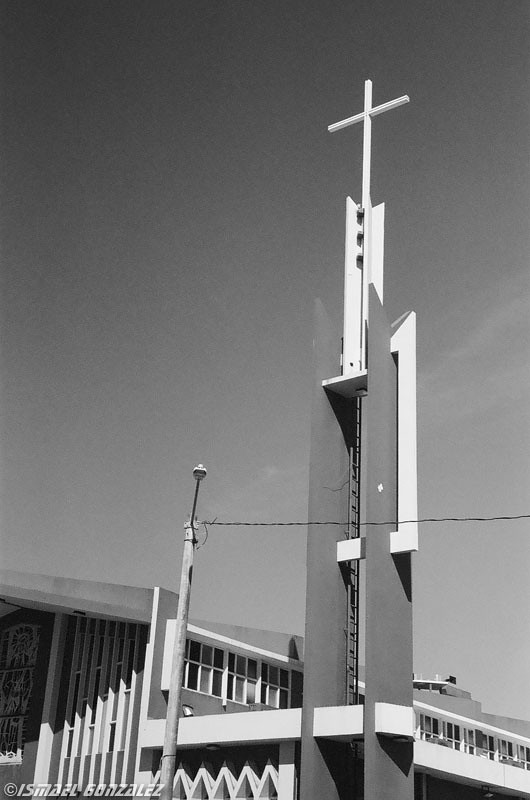 One of my favorites 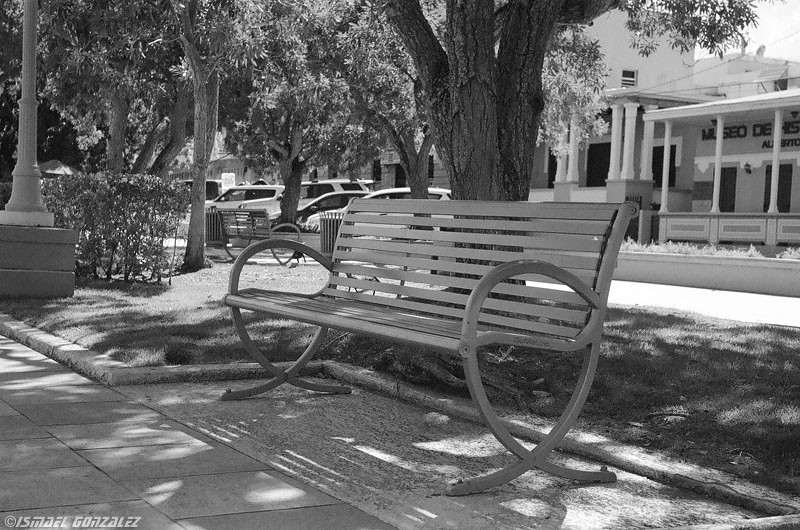 Another favorite 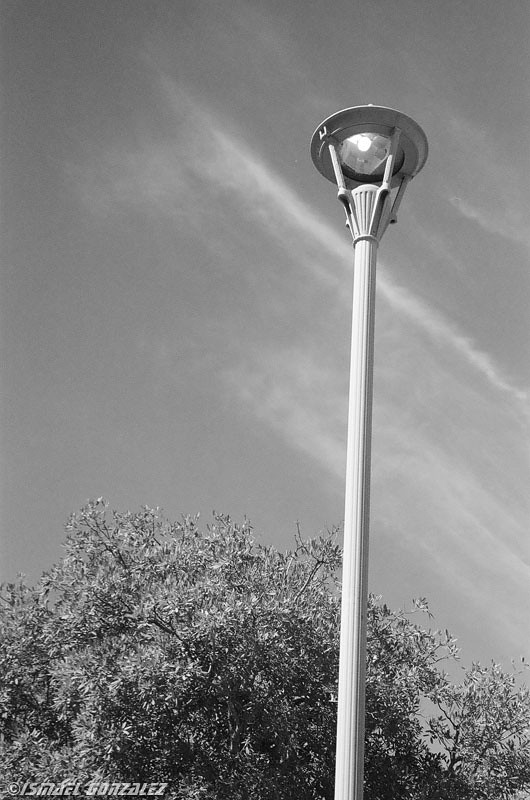 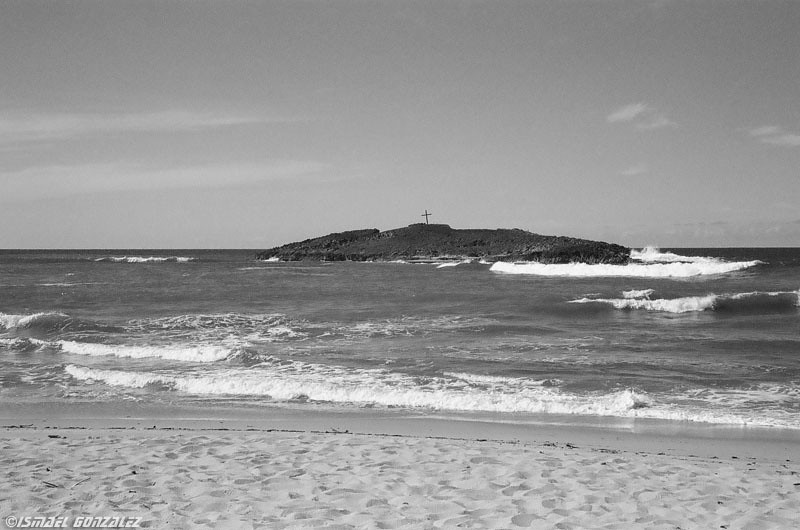 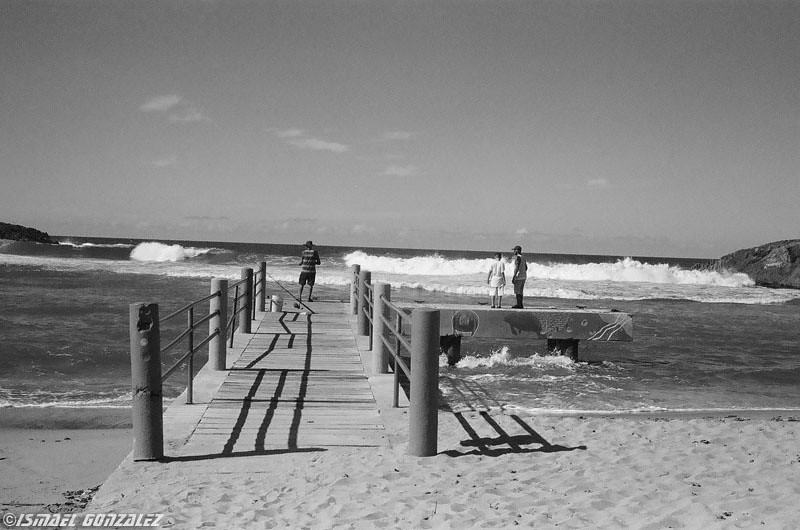 and another favorite 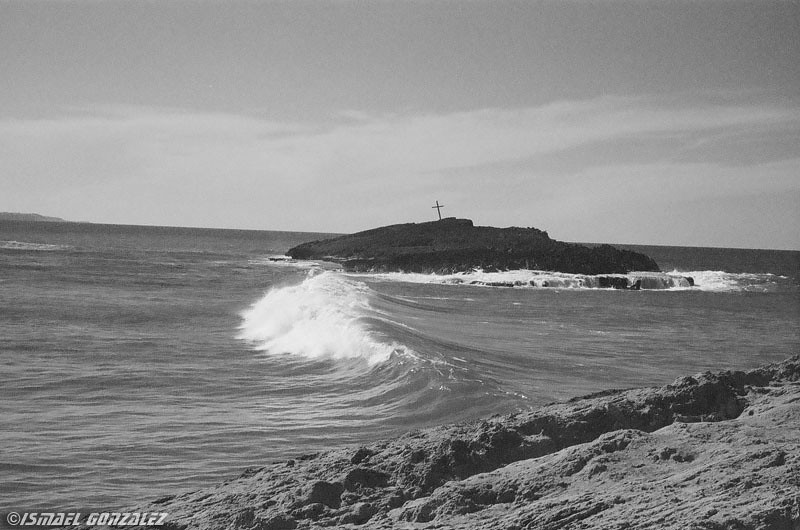 and probably my favorite: 1/2s using the self timer (tripod of course) 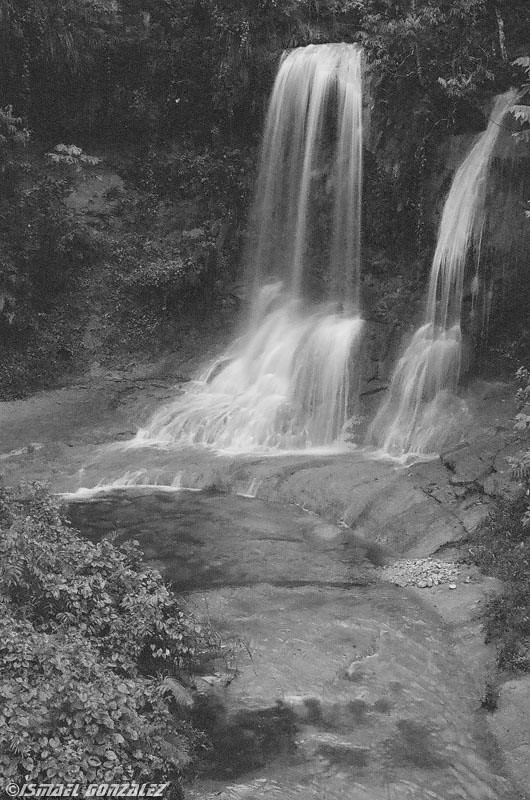 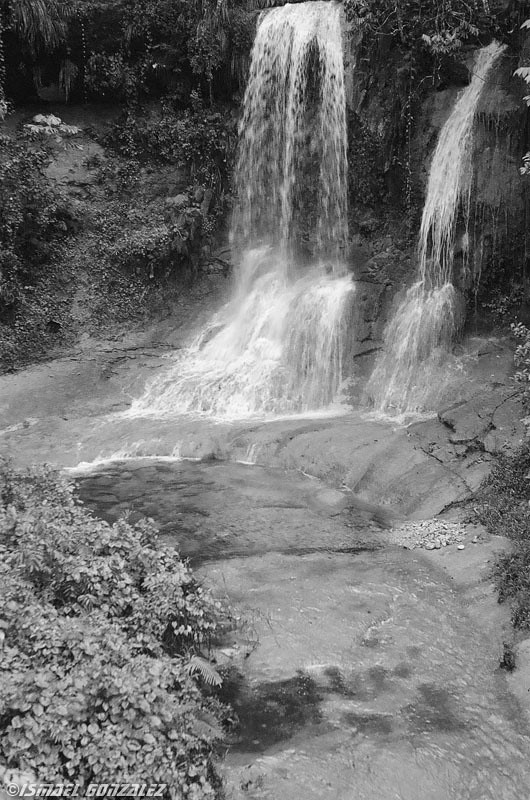 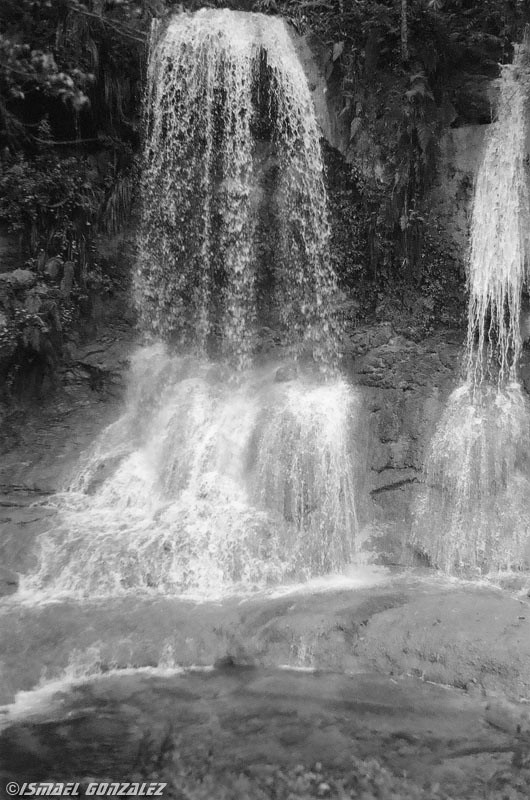 Very happy! Instead of worrying about taking a notebook, recording all parameters and try to test every possible exposure combination, I simply went out to enjoy it. And I sure did! Thanks, Ismael | |
| These users Like ismaelg's post: |

| 11-04-2022, 06:35 PM | #12 |
| But let's go back to the end of the war. The Soviets controlled Dresden, where the main Contax factory was located. Long story short, the Soviets took the factory: tools, machinery, parts inventory and most importantly personnel, and relocated it to the Arsenal factory in Kiev, Ukraine in the then Soviet Union. By 1947 they were already building CONTAX II cameras. The only change was that it was renamed KIEV in the front plate. These were not CONTAX copies. These were actually genuine CONTAX cameras made by Zeiss Ikon machinery, using original parts, personnel and processes. Only that the factory was now located in the Soviet Union. The question of quality control is crucial as well. As Soviet workers are not renowned for meticulous attention to detail, what proportion of the staff and workers at this factory were brought from Germany? How much inventory was German? By the end of the war, it's likely that most German factories were suffering from severe shortages; even in peacetime, how many years of inventory does a factory carry for any given part? So how long could looted Contax inventory sustain manufacturing in the Soviet operation? This, among other reasons, is where the claim that they are genuine Contax cameras really doesn't hold up. | |
 |
« Late 19th Century Stereoscope: Virtual reality from 125 years ago
|
compatibility spotmatic sp f and 8 element takumar f1.4 50mm »
| Bookmarks |
| Tags - Make this thread easier to find by adding keywords to it! |
camera, cameras, contax, film, germany, ii, ikon, kiev, leica, vintage, zeiss  |
 Similar Threads
Similar Threads | ||||
| Thread | Thread Starter | Forum | Replies | Last Post |
| For Sale - Sold: 1955 Kiev-2a rangefinder w/1955 Jupiter-8 50/2 | Swift1 | Sold Items | 2 | 09-10-2022 12:28 PM |
| Brownie 127: 1952-1955 diplomat from the British Delegation | ismaelg | Vintage Cameras and Equipment | 2 | 01-27-2022 01:27 PM |
| Black & White 1955 November, 12 - 10:01 pm | flaviopetrone | Post Your Photos! | 3 | 11-15-2014 03:52 PM |
| Circa 1955 | 7.62lew | Post Your Photos! | 8 | 11-11-2008 01:22 PM |










 Post #1 by ismaelg
Post #1 by ismaelg








